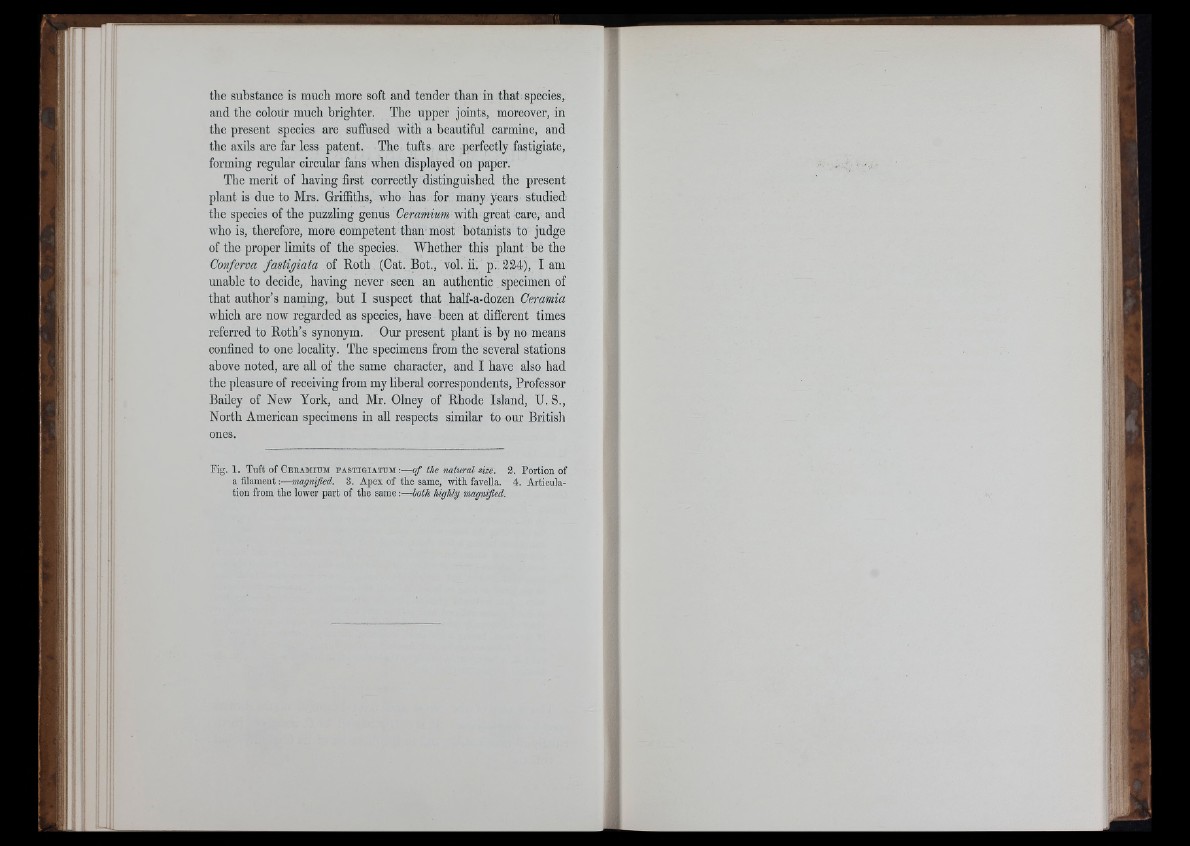
the substance is much more soft and tender than in that species,
and the colour much brighter. The upper joints, moreover, in
the present species are suffused with a beautiful carmine, and
the axils are far less patent. The tufts are perfectly fastigiate,
forming regular circular fans when displayed on paper.
The merit of having first correctly distinguished the present
plant is due to Mrs. Griffiths, who has for many years studied
the species of the puzzling genus Ceramium with great care, and
who is, therefore, more competent than most botanists to judge
of the proper limits of the species. Whether this plant be the
Conferva fastigiata of Roth (Cat. Bot., vol. ii. p. 224), I am
unable to decide, having never seen an authentic specimen of
that author’s naming, but I suspect that half-a-dozen Ceramia
which are now regarded as species, have been at different times
referred to Roth’s synonym. Our present plant is by no means
confined to one locality. The specimens from the several stations
above noted, are all of the same character, and I have also had
the pleasure of receiving from my liberal correspondents, Professor
Bailey of New York, and Mr. Olney of Rhode Island, U. S.,
North American specimens in all respects similar to our Britisli
ones.
Fig. 1. Tuft of Cebamium e a s t ig i a tu m :—o f the natural size. 2. Portion of
a filament :—magnified. 3. Apex of the same, with favella. 4. Articulation
from the lower part of the same :— both /
L'-U.